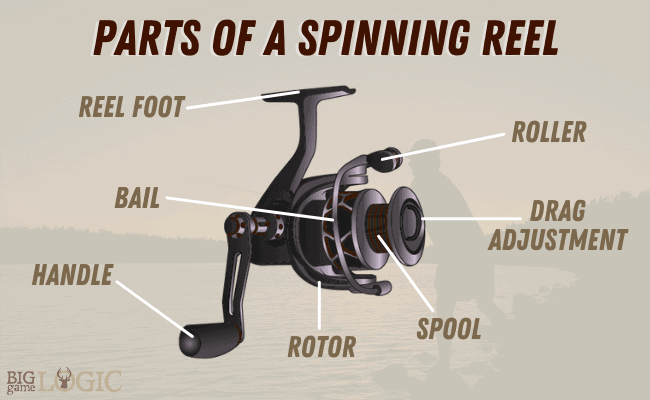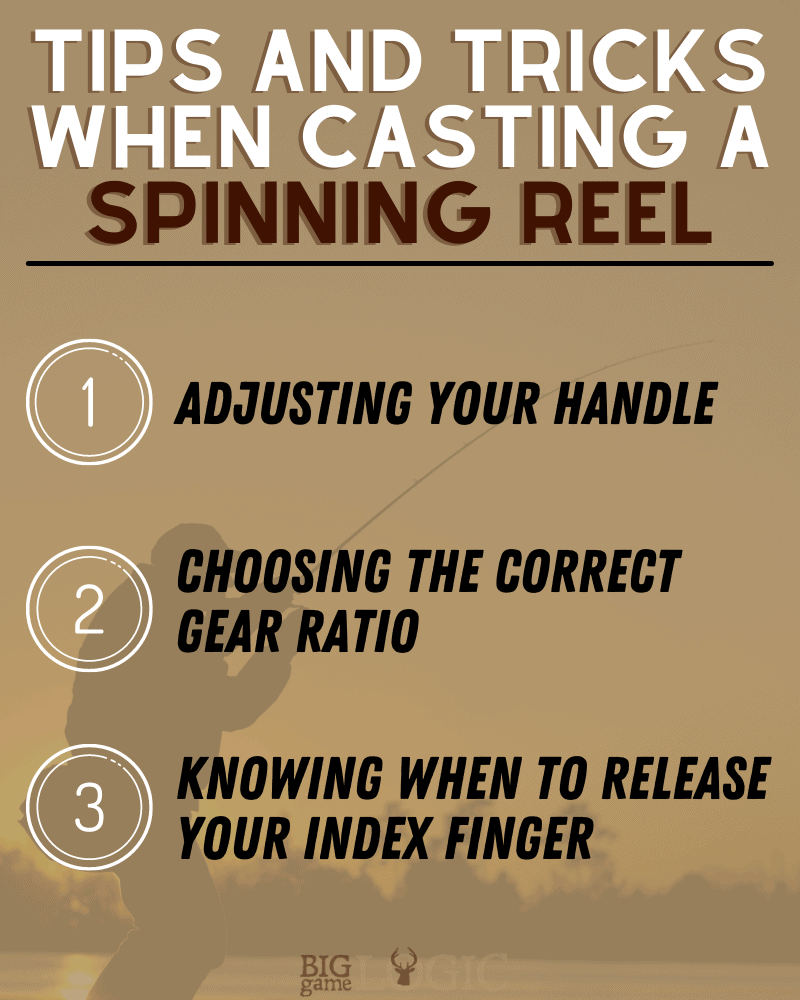People new to fishing often choose a spinning reel because it seems easy to use. However, casting a spinning reel presents more challenges than you would think.
Even some experienced anglers miscast these reels.
But, with proper training and some practice, you can avoid some common mistakes. This article will teach how to cast a spinning reel perfectly every time.

Photo Credit: SalmonandSteelheadJournal.com
Quick Questions Before Starting
Before we get started, you might have a few questions about casting a spinning reel.
How Difficult Is This Task?
Learning how to cast correctly is easy.
How Long Does it Take to Complete?
This takes about 30 seconds but with practice will become more consistent.
How Much Do Materials Cost?
Materials cost anywhere from $20 to $300, depending on how expensive you want to go. But, you can get a decent setup that will work well on the lower end of the scale.
Casting a Spinning Reel
We teach you how to cast accurately in this step-by-step guide. We included picture examples but, if you prefer video format, you can watch the video below by Salty Scales.
1. Learn the Terminology
Before you even hit the water, you need to understand the basics of your reel. We list some basic terminology you should know below:
Bail
This term refers to the casting trigger that’s open when casting and closed when retrieving. The bail also keeps your line in the correct position when going off and on the spool, which prevents knots.
Drag
The drag is a dial that is at the top of the reel. This component adds or removes tension to the line. This adjustability helps when fighting fish.

Spool
The spool, located beneath the drag knob, houses the fishing line.
Crank
This term refers to the handle on your reel, which you use to retrieve your lure.
Gear Ratio
This term means how fast the spool reclaims the line. For example, a 6:1 ratio would mean that the spool spins six times every time you fully turn the handle.
Anti-reverse switch
This switch on the bottom of the reel allows you to reel in reverse, known as back reeling. When you use this switch, you add tension without relying on the drag. This technique is helpful when fighting smaller fish.
2. Position the Rod and Reel
Correct positioning is essential for proper casting. Turn the reel, so the bail faces upwards, like in the image below.


Hold the rod in a position that you’re comfortable in. Some anglers hold the rod with index and middle finger in front of the reel shaft and the rest behind it.
Others prefer having all fingers in front, just their pinky behind, or various ways. There’s no correct or incorrect holding position.



3. Adjust Lure Length
Your lure should be six to eight inches from the rod tip when casting. This length will give you the most accuracy. Momentum and the weight of the bait will bend the rod for efficiency.

Photo Credit: Wired2Fish.com
4. Hold the Line With Your Index Finger
Your trigger should lightly hold your line. Don’t grab tightly and pull toward the rod.
This mistake negatively impacts accuracy and distance. The line will snag on your finger, and your bait won’t go where you want it to. Even experienced anglers get this wrong.


5. Engage Your Bail
With your hand that isn’t holding the rod, flip up the bail. This step will allow your line to leave the spool when you cast.

6. Locate Your Target
Find the place you want your lure to go. Locating your target before casting allows you to keep your eye on it and aim for it when you cast.
7. Choose What Type of Cast You Want
You need to decide what kind of cast you want to do. There are three primary options: overhand, roll, and side.
8. Place Your Other Hand on the Butt of the Rod
Once you make your decision, place your other hand on the rod. Positioning it on the butt will give you more control.
9. Cast
Finally, you’re ready for the final step: casting. The steps you need to take will vary depending on what type you chose.
Overhand
Point your rod at your target. Launch it backward over your shoulder, then straight forward.
Roll Cast
Hold your rod close to the water.
Roll the rod in a circular motion towards the water. Your lure should skip along the water.
Side Cast
Load the rod back with your arms out to your side. Cast forward at the target.
Watch the video example near the top of the article for examples of these casts.

Photo credit: skilledangler.com
10. Close the Bail
Manually flip the bail back down. This action allows you to reel in your line. Closing it also prevents knots and damage.
Tips and Tricks When Casting a Spinning Reel
Now that you know how to cast properly, there are a few tips and tricks that will help you improve even more.
Adjusting Your Handle
If you’re left-handed, you may think you need to buy a particular reel. Many people don’t know that you can adjust your crank for your dominant hand.
To do this, unscrew the knob on the opposite side of the handle. Switch to the other side and re-tighten, and you’re ready to go!
Choosing the Correct Gear Ratio
You might hear that faster is always better. But this isn’t the case with your gear ratio. People divide these ratios into three categories: slow, medium, and fast.

Slow
Slow ratios are below 6:1. These reels are great for using deep diving crankbaits, slow-rolled spinnerbaits, and large swimbaits.
Medium
These reels are between 6:1 and 7:1. You should use medium ratios with shallow spinnerbaits, square-billed crankbaits, medium-depth lures, and umbrella rigs.
Fast
Fast ratios are 7:1 or above. These reels are great for baits like jigs, big worms, Texas rigs, and Carolina rigs.
Knowing When to Release Your Index Finger
Timing when to let go of the line is vital for a perfect cast. Knowing when to release can be difficult.
If your line goes straight up in the air, then you let go too early. When you release too early, the lure crashes down at your feet. Adjust your timing accordingly when needed. With a lot of practice, timing will eventually come naturally to you.

Conclusion
Casting a spinning reel can be more challenging than it looks. Now that you’ve learned what steps to take and some tips and tricks, you can cast perfectly every time. It might take some practice, but you’ll be using your spinning reel like a pro in no time!
People Also Ask
You may have a few more questions about your spinning reel. Below are some questions new anglers frequently ask. We’ll answer them in detail.
How to Cast Farther With a Spinning Reel
There are several tips you can follow to cast farther. Use a medium weight rod and a lighter line that isn’t too heavy to load correctly. Fill your spool so that more line comes off. Clean and lube your reels to avoid friction in the bearings. And, of course, practice, practice, practice!
What’s the Difference Between Casting a Spinning Reel in the Surf?
Casting in the surf presents unique challenges like the steady wind onshore and waves crashing all around. Spinning reels are great for fishing sand beaches because you can pinch the line to feel even the slightest nibble. You also want a well-sealed reel to keep out sand and salt.
